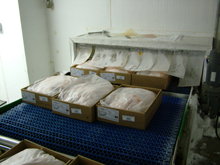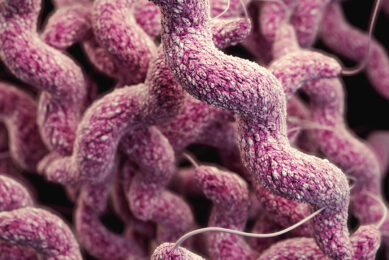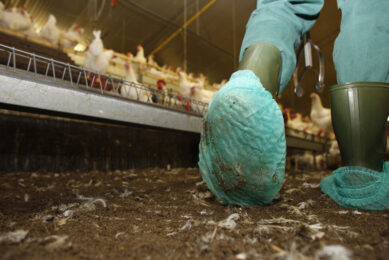Skinning and freezing could help reduce Campylobacter

Two Belgian poultry processing firms with recognised food safety management systems (FSMS) should consider further measures such as skinning carcasses and freezing to reduce high Campylobacter spp. levels in poultry products, according to a new study published in the Journal of Food Production.
Major conclusion of the study is that “Risk managers must be aware that a certified FSMS based on sound HACCP (hazard analysis critical control point) plans, good manufacturing practices, pre-requisite programs and legal requirements is, in the specific case of poultry meat production, not a guarantee for the absence of pathogens and a good food safety outcome.”
Other suggested measures include using modified atmosphere packaging or vacuum packaging to increase product safety and shelf life, as well as better staff hygiene training and product-specific sanitation.
EU-wide problem
Campylobacter is the leading cause of food borne bacterial gastrointestinal illness in Belgium, with a notification rate of 58.8 cases per 100,000 people. This reflects EU-wide patterns: recent Food Standards Agency (FSA) statistics show that over 320,000 UK cases of food poisoning a year occur when consumers eat undercooked meat.
In July the FSA announced a five-year action plan to improve risk management processes throughout the supply chain, while the Danish government is investing DKK 25m (€3.3m) annually until 2012 to investigate pathogens.
The authors cited figures from a 2008 Belgian national study of 11 poultry companies showing 85 per cent prevalence of Campylobacter spp. in poultry meat preparations from one firm, company I, and 58 prevalence from the other, company D.
Both firms slaughter, cut, prepare and package poultry for delivery to large retail stores, with FSMS certified by the British Retail Consortium and Belgian national food safety agency guidelines, where the last meet EU hygiene legislation.
The authors decided to assess the FSMS of the two companies more closely to explain high Campylobacter spp. levels. Pathogen counts were compared to Belgian standards, and microbial readings were rated on a level of one to three, with Level 3 reflecting “good food safety performance, no improvements needed”. Company D scored 1-2 (moderate to poor performance) for its overall FSMS measures, while company scored 2 (moderate).
Researchers visited the companies three times in three months, and microbial food and swab samples assessed were taken from raw carcasses, minced meat, staff chopping boards and gloves or hands. The methodology involved a new microbial assessment scheme that measured levels in 10 “critical sampling” locations throughout the production process.
Source: MeatProcess.com













